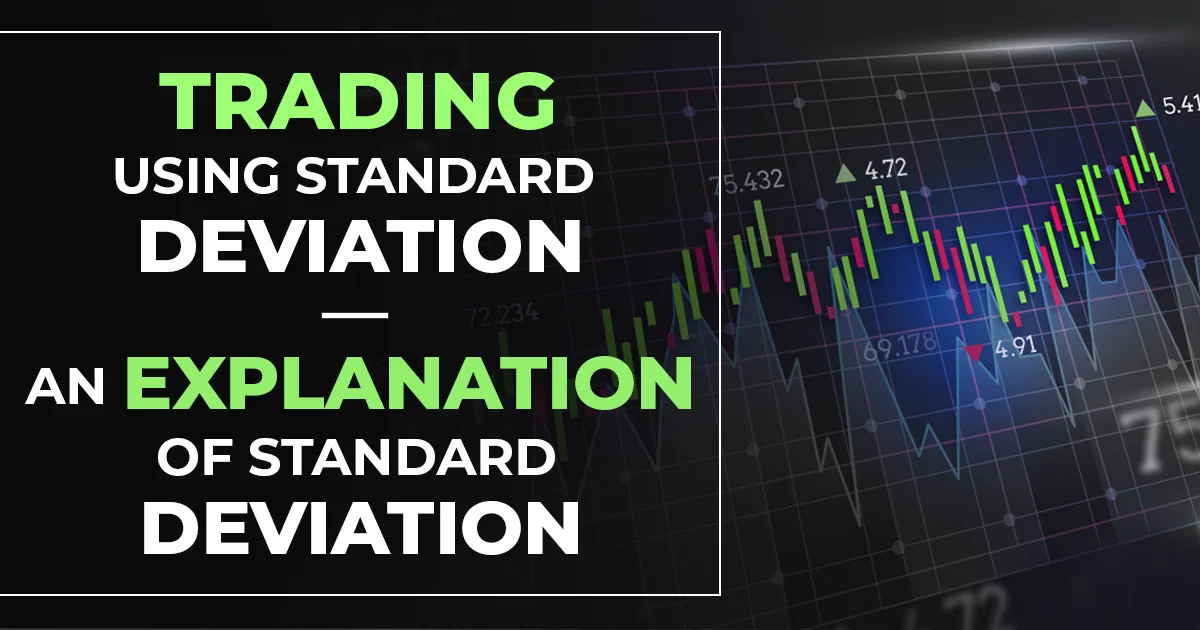Trading using Standard Deviation is like Mastering the art of trading through the market dynamics in the world of financial markets, where uncertainty reigns and fortunes may change at the drop of a hat. The idea of standard deviation is a crucial mechanism that traders use to unravel these processes. We’ll go into the essence of standard deviation and find how it functions as a critical tool for navigating success in this extensive tutorial.
Understanding Standard Deviation
The statistical metric of trading using standard deviation describes how widely apart data points are from their mean or average in a dataset. It functions like a barometer in the trading sector, providing perceptions of the possible volatility of a financial instrument’s price changes.
A higher standard deviation indicates greater volatility since prices are more widely distributed from the mean. A reduced standard deviation, on the other hand, denotes a more managed and predictable range of price changes.
Decoding the Computation Process
The calculation of standard deviation involves several steps, making it a robust analytical tool for traders:
- Putting Together Historical Data: Start by putting together a series of historical price data points that are pertinent to the item under consideration.
- Calculating the Mean: By adding up all the data points and dividing by the total number of data points, you can get the average of the gathered data.
- Variations Made Clear: Calculate each data point’s deviation from the computed mean next.
- Squared Deviations after transformation: To remove negative numbers and emphasize the importance of departures from the mean, square each derived deviation.
- Variation Revealed: The variance, which provides a numerical representation of the entire data distribution, is the average of the squared deviations.
- Emergence of Standard Deviation: The standard deviation is produced by taking the square root of the variance in the final step. Standard deviation is an accurate predictor of an asset’s volatility. It enables traders to foresee probable price ranges. Higher standard deviation assets are more likely to experience more intense price swings, which presents chances for sizable profits and corresponding hazards.
The North Star of Risk Management
Understanding an asset’s standard deviation strengthens risk management which is a crucial component of profitable trading.
This information equips traders to modify their strategy and position sizing in line with the asset’s volatility, protecting against unanticipated market changes.
- Precision in Target Setting: The use of standard deviation is seen in the selection of the best profit objectives and stop-loss levels. Wider target ranges stop for assets with high volatility, taking into account the more significant price swings and subsequently maximizing the potential for profit.
- Market Timing: By combining standard deviation with other technical indicators, traders have access to a wide range of tools for spotting prospective market trends and reversals. Unusual increases or decreases in volatility may be signs of impending price changes.
Conclusion
The standard deviation serves as a source of illumination in the trading world’s constantly shifting environment. It gives traders the ability to decipher the intricate dance of market volatility and offers priceless information for making strategic decisions. Trading methods may be tailored to the needs of the market and improve risk management and profit-making possibilities by learning the computation and comprehension of standard deviation.
Remember that while standard deviation is a formidable tool, its potential really shines when integrated into a comprehensive trading strategy. It also takes into account many variables influencing market behavior. In an uncertain world, the standard deviation is a constant companion, directing traders toward profitable endeavors.




